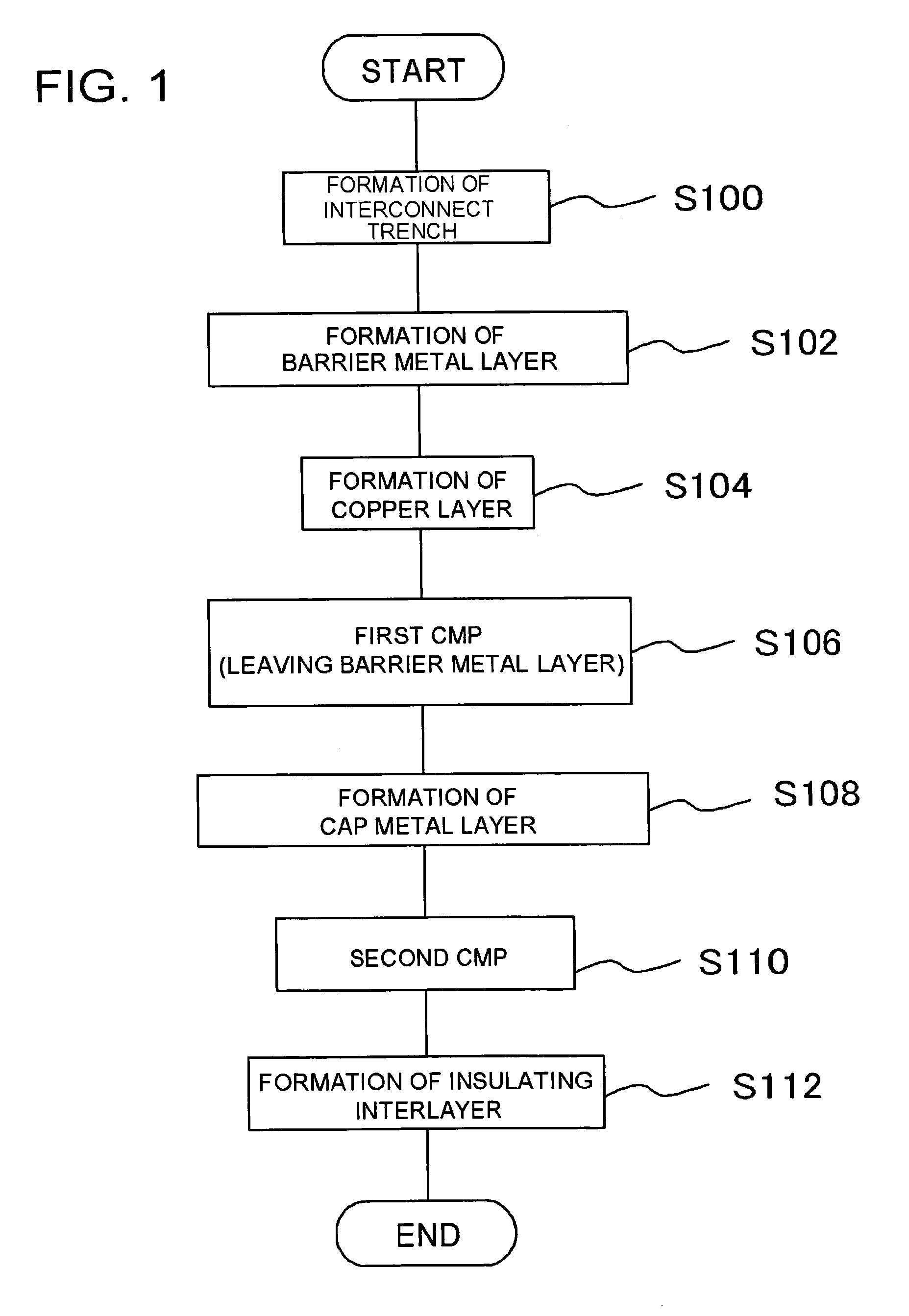Semiconductor device and method of manufacturing the same
a semiconductor device and semiconductor technology, applied in the field of semiconductor devices, can solve the problems of affecting the silicide surface of the semiconductor device, deteriorating reliability, and deteriorating the flatness of the semiconductor device b>10/b>, and achieves the effect of reducing the risk of failur
- Summary
- Abstract
- Description
- Claims
- Application Information
AI Technical Summary
Benefits of technology
Problems solved by technology
Method used
Image
Examples
example
Example 1
[0066]According to the procedure which has been explained, referring to FIGS. 2A to 2F, the semiconductor device with the configuration shown in FIG. 2F was manufactured. Here, the first insulating interlayer 102 was composed of a SiOC film, the barrier metal layer 104 was composed of a Ta / TaN film, and the cap metal layer 108 was composed of a CoWP film. Firstly, the interconnect trench 103 was formed in the insulating interlayer 102 by dry etching, as shown in FIG. 2A. As shown in FIG. 2B, the TaN film was deposited to a layer thickness of 20 nm, and the Ta film was deposited to a layer thickness of 10 nm to form the barrier metal layer 104. Furthermore, the copper seed layer was deposited to a layer thickness of 100 nm by sputtering, and the copper layer was deposited to a layer thickness to 800 nm by electroplating. Subsequently, the copper layer formed outside the interconnect trench was removed by CMP, as shown in FIG. 2C. At this time, CMP time was adjusted so that a...
example 2
[0067]According to the procedure which has been explained, referring to FIGS. 5A to 5F, the semiconductor device with the configuration shown in FIG. 5E was manufactured. Here, the first insulating interlayer 12 was composed of SiOC film, the barrier metal layer 14 was composed of a Ta / TaN film, and the cap metal layer 18 was composed of a CoWP film. The cap metal layer 18 was formed in a similar manner to that of the cap metal layer 108 in the example 1.
[0068]The surface roughness of the surfaces of the cap metal layers in the semiconductor devices manufactured in the examples 1 and 2 was measured under the following conditions, using an atomic force microscope (AFM).
[0069]Measuring Range: 10 um2;
[0070]Measuring resolution: 0.05 um;
[0071]Step Measuring Range: 20 nm; and
[0072]Step Measuring Accuracy: 0.5 nm
[0073]After the cap metal layer 108 was formed in the example 1, the RMS value of the surface roughness of the cap metal layer 108 was about 2 to 5 nm after the second CMP. Moreov...
PUM
| Property | Measurement | Unit |
|---|---|---|
| thickness | aaaaa | aaaaa |
| surface roughness | aaaaa | aaaaa |
| surface roughness | aaaaa | aaaaa |
Abstract
Description
Claims
Application Information
 Login to View More
Login to View More - R&D
- Intellectual Property
- Life Sciences
- Materials
- Tech Scout
- Unparalleled Data Quality
- Higher Quality Content
- 60% Fewer Hallucinations
Browse by: Latest US Patents, China's latest patents, Technical Efficacy Thesaurus, Application Domain, Technology Topic, Popular Technical Reports.
© 2025 PatSnap. All rights reserved.Legal|Privacy policy|Modern Slavery Act Transparency Statement|Sitemap|About US| Contact US: help@patsnap.com



